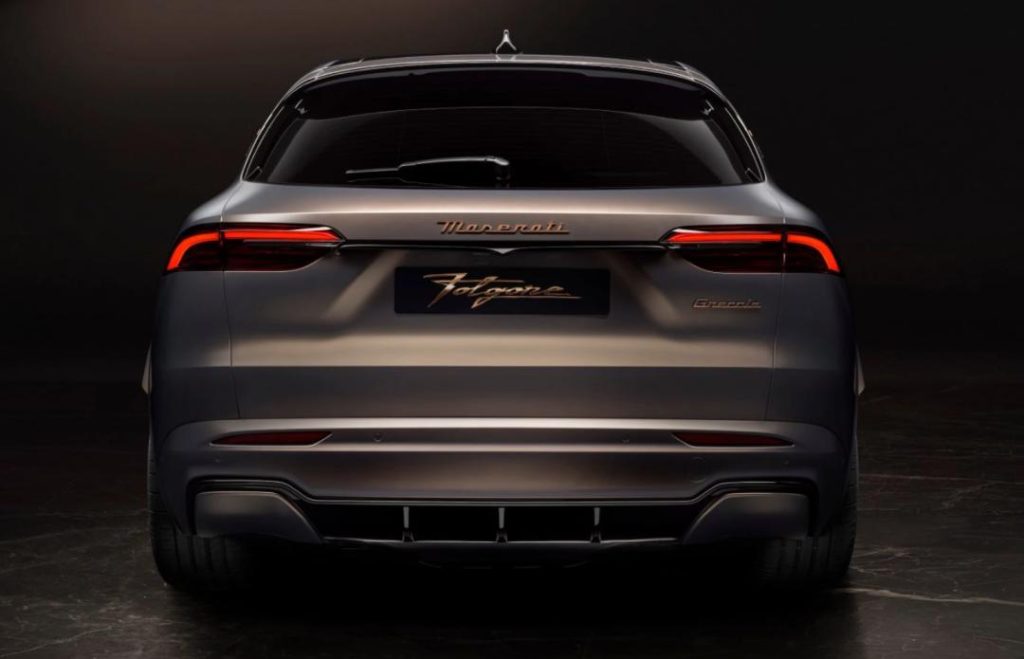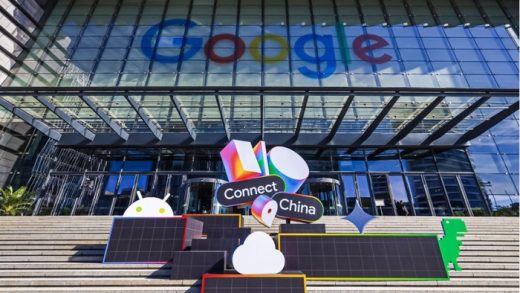
Read More《35.88万起,玛莎拉蒂“打骨折”搏命》
Positive Comments: The price – cut strategy works in the short term, buying a survival buffer for the brand
The “drastic price – cut” of Maserati Grecale Folgore is essentially a “desperate self – rescue” of a super – luxury brand in the market winter, and its short – term positive significance cannot be ignored.
First of all, the price cut directly stimulates market demand, quickly clears inventory and recovers funds. As mentioned in the news, the special – offer models starting at 358,800 yuan (about 400,000 yuan including all costs) launched by dealers have triggered market enthusiasm. Nearly half of the seventy or eighty units in stock at some stores have been sold, and even customers from other regions have placed orders. This data shows that the price reduction precisely hits the Chinese market’s consumption psychology regarding the “entry threshold of super – luxury brands” – buying a Maserati at the price of domestic high – end new energy vehicles (such as mainstream models like NIO ET5 and Li L7, whose prices are around 300,000 – 400,000 yuan) is highly attractive to the middle – class group. For Maserati, whose sales have plummeted recently (only 1,209 units were sold in China in 2024 and only 1,023 units in the first nine months of 2025), this “trading price for volume” strategy can quickly boost short – term sales, relieve the inventory pressure on dealers, and at the same time, recover cash flow for its parent company, Stellantis Group, alleviating its huge financial loss (a loss of 2.24 billion euros) in the first half of the year.
Secondly, the price cut expands the brand’s reach and lays the groundwork for long – term brand penetration. Although the core value of a super – luxury brand lies in its “scarcity”, during the new energy transformation period, if traditional brands completely adhere to high prices, they may lose users completely due to market marginalization. By lowering the price, Maserati allows more consumers to have the opportunity to contact and experience its products (such as the symbolic meaning of the “Trident” logo and the brand’s historical culture), which is essentially cultivating a potential user group. Especially among young consumers in the Chinese market, their perception of luxury brands has shifted from “unreachable” to “reachable with a stretch”. This price cut may attract a group of “first – time luxury car buyers”, and some of them may upgrade to higher – end models in the future, maintaining the brand’s presence in the market.
Finally, the price cut exposes the transformation difficulties of traditional luxury brands and objectively promotes industry reflection and adjustment. Maserati’s “converting gasoline cars to electric cars” strategy (users generally believe that its pure – electric models have no technological advantages) and its price – cut for survival are not unique cases. The “converted gasoline – to – electric” models of traditional luxury car brands such as BBA are also facing a cold market reception and have to cut prices for promotion. This phenomenon forces the entire industry to think: In the new energy era, is the core competitiveness of super – luxury brands “brand premium” or “technological innovation”? Although Maserati’s price cut is a passive move, it reveals the pain points of traditional brand transformation through an extreme case and provides a “negative example” for the industry.
Negative Comments: The risk of brand value overdraft intensifies, and technological shortcomings may be a fatal blow
However, Maserati’s “drastic price – cut” is more like a “double – edged sword”. Its long – term negative impact may far exceed the short – term benefits and may even accelerate the collapse of the brand value.
First of all, the dilution of the brand’s high – end image is a major concern. The core barriers of a super – luxury brand are “scarcity” and “status symbol”. Maserati once briefly became well – known due to the label of “a car for show – off by micro – business people”. However, this price cut (from the official guide price of 898,800 yuan to starting at 358,800 yuan) far exceeds market expectations, directly lowering its price range to that of mainstream domestic new energy vehicles. This means that the “Trident” logo, which once represented “wealth and privilege”, may now become a “value – for – money option” and even be labeled as “being sold at a discounted price”. For existing car owners, the resale value of their vehicles will drop significantly (the second – hand market may collapse due to the new car price cut), and their brand recognition will also be frustrated. For potential users, the “low price” may weaken their belief in the brand’s high – end attributes, leading to a spreading wait – and – see sentiment of “buying when prices rise, not when they fall”.
Secondly, the technological shortcomings of “converting gasoline cars to electric cars” will drag down the product’s reputation in the long run. Users’ doubts about Grecale Folgore (they generally think that “they are just buying a logo”) point directly to the core. As Maserati’s first pure – electric model, its technological route is considered to be “converting gasoline cars to electric cars”, and it lacks competitiveness in key indicators such as range, intelligent driving, and in – car systems compared with domestic new energy vehicles (such as BYD, NIO, and XPeng). As mentioned in the news, its range is 533 kilometers, with 550 horsepower and a top speed of 220 km/h. However, these parameters are already common among domestic new energy models (for example, the range of NIO ET5 exceeds 600 kilometers, and the performance version of Zeekr 001 has over 500 horsepower), and the latter have obvious advantages in terms of intelligence (such as advanced assisted driving and cockpit interaction). If Maserati cannot make up for its shortcomings through technological upgrades and only relies on “brand premium” for price – cut promotion, it may eventually be regarded by users as a “shallow luxury” brand, completely losing market trust.
Finally, the financial crisis of the parent company, Stellantis, may limit Maserati’s long – term transformation ability. Stellantis Group’s net profit dropped by 70.57% year – on – year in 2024, and it suffered a huge loss (2.24 billion euros) in the first half of 2025. Although the group’s statement of “unconditional support” for Maserati has soothed the market, the group’s overall resources are limited. As the only luxury brand under the group, Maserati may face the contradiction of “needing both financial support and profitability”. If it continues to invest in new energy R & D (such as the development of a native pure – electric platform, three – electric technologies, and intelligence), it will consume a large amount of funds. If it reduces investment, the technological gap will further widen. This “dilemma” may cause Maserati to “lose both price and technology” during the transformation and eventually be eliminated by the market.
Advice for entrepreneurs: Adhere to brand positioning, and technological innovation is the foundation
Maserati’s “desperate price – cut” provides multi – dimensional warnings and inspirations for entrepreneurs, especially in terms of brand positioning, technological investment, and market adaptability:
Brand positioning: The premium should match the value, and avoid “suicidal price – cuts”
The premium of a super – luxury brand comes from the comprehensive value of “scarcity + technology + culture”. Maserati’s price cut is essentially an overdraft of brand value. Entrepreneurs need to be clear that once the brand positioning is blurred, it is difficult to rebuild user trust. If they blindly cut prices due to short – term sales pressure, it may lead to long – term losses of “brand downgrade”. It is recommended that entrepreneurs evaluate the matching degree of “price – value” when setting prices. If they need to adjust prices, they can avoid direct price cuts of the main brand by launching sub – brands or limited – edition models.Technological investment: Bet on core capabilities during the transformation period, and avoid path dependence like “converting gasoline cars to electric cars”
Maserati’s “converting gasoline cars to electric cars” strategy exposes the path dependence of traditional enterprises – trying to “cope” with new market demands with old platforms. During the industry transformation period (such as the replacement of fuel vehicles by new energy vehicles and the reshaping of product forms by AI), entrepreneurs need to be vigilant against the “resting on laurels” mentality and should focus on core technologies (such as the three – electric systems of new energy and intelligent algorithms) to build “irreplaceable” technological barriers. For example, domestic new energy brands have achieved a dimensionality – reduction blow to traditional brands through technologies such as native pure – electric platforms and self – developed batteries, which is a “technological breakthrough” path that entrepreneurs should learn from.Market adaptability: Respond quickly to demands and avoid “arrogant lag”
Maserati’s decline in the Chinese market is directly related to its “slow reaction” to the new energy trend. Its first pure – electric model was launched in 2024, and its technology lags behind domestic competitors. Entrepreneurs need to establish “market sensitivity”, quickly capture demand changes (such as preferences for new energy and intelligent demands) through user surveys and data monitoring, and adjust product strategies. For example, if the target market has shifted to new energy, they need to plan in advance for technological R & D and product iteration to avoid being eliminated by the market due to “lag”.Financial health: Balance short – term survival and long – term investment, and avoid “drinking poison to quench thirst”
Although Maserati’s price cut can recover funds in the short term, it may sacrifice long – term profits (such as the loss of future pricing power due to the decline in brand premium). Entrepreneurs need to weigh the relationship between “clearing inventory” and “R & D investment” under financial pressure. In the short term, they can relieve cash – flow pressure through promotions, but they need to reserve enough funds for core technology and brand building to avoid “abandoning the future for survival”. For example, they can reduce costs through supply – chain optimization and asset – light cooperation instead of simply relying on price cuts.
In conclusion, Maserati’s “desperate move” is an epitome of traditional luxury brands in the new energy wave. Its experiences and lessons warn entrepreneurs that in a rapidly changing market, brand value needs to be supported by technology and user trust. Short – term “surviving through price cuts” may be necessary, but long – term “technological breakthrough” and “brand adherence” are the foundation of survival.
- Startup Commentary”The Incomplete Evolution History of Bathing Centers”
- Startup Commentary”Starting from 358,800 yuan, Maserati Slashes Prices Drastically to Survive”
- Startup Commentary”Monopoly: Always the Best Business”
- Startup Commentary”A PE Giant Spent $6.6 Billion on a Crematorium”
- Startup Commentary”In a Low-Sports Year, Social Assets Still Hold Great Value”





